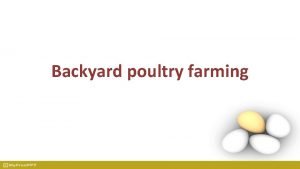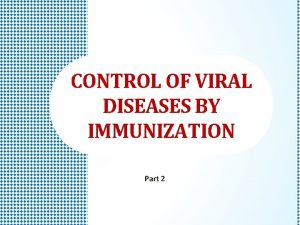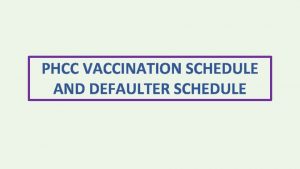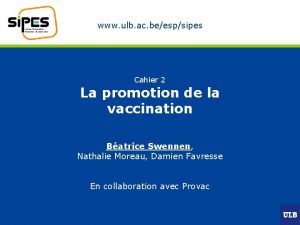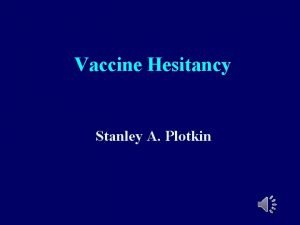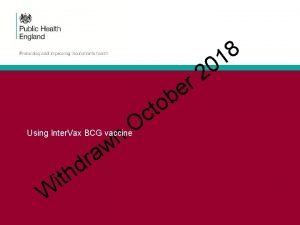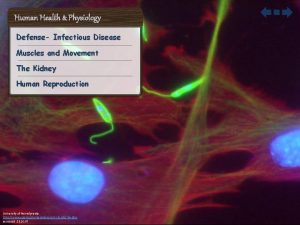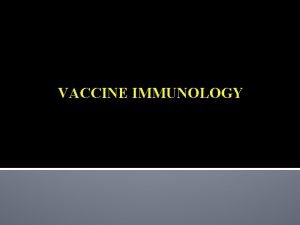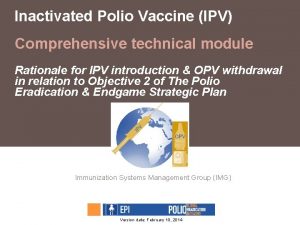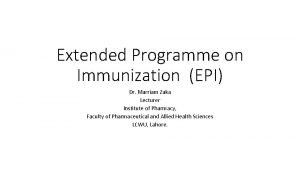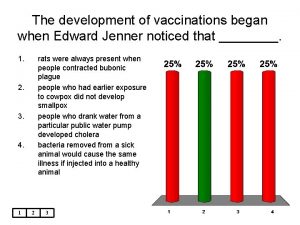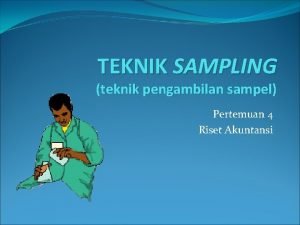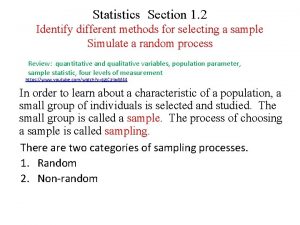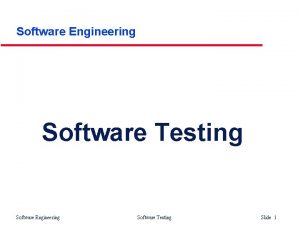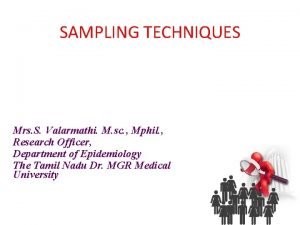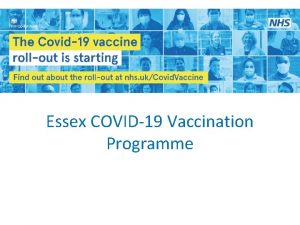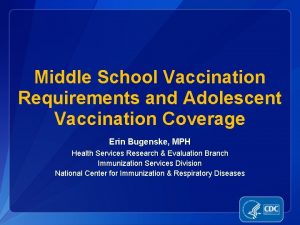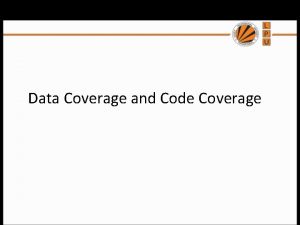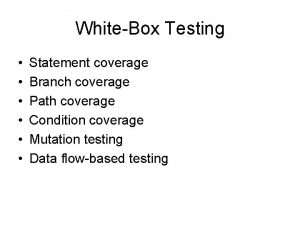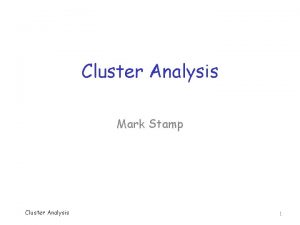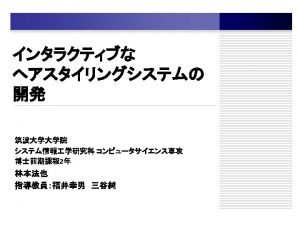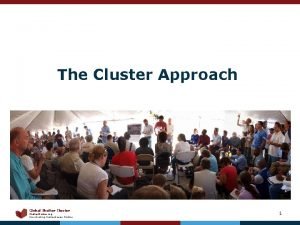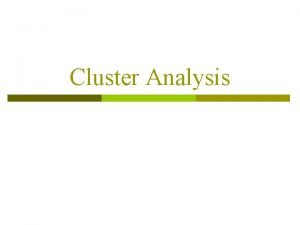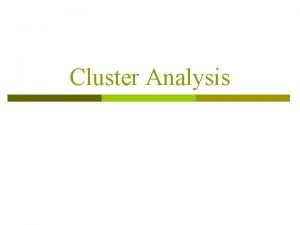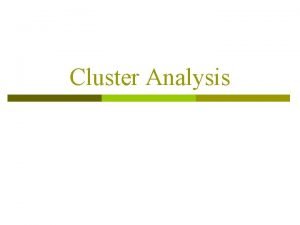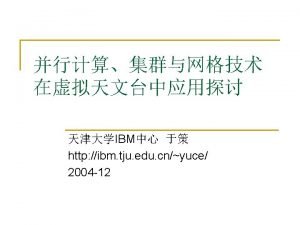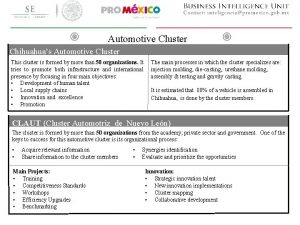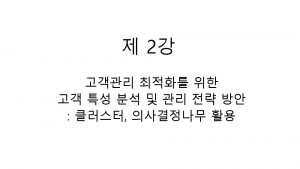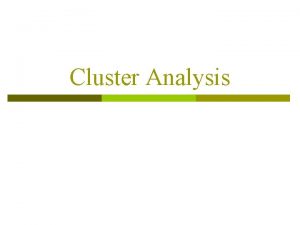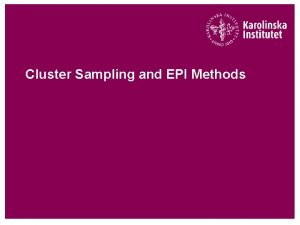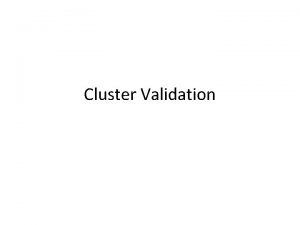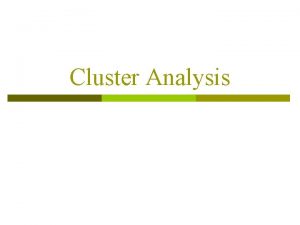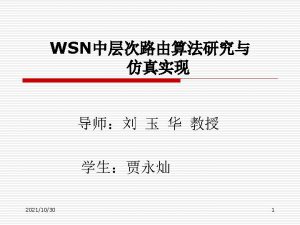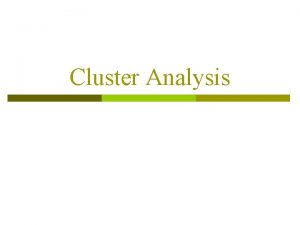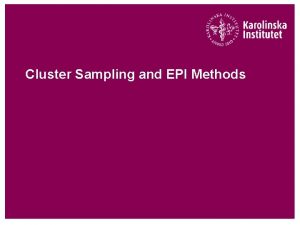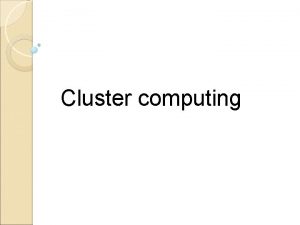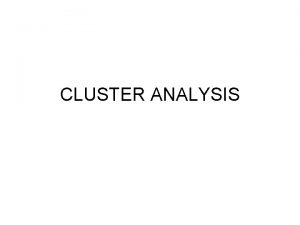PostSIA Coverage Survey New WHO Vaccination Coverage Cluster

























![Challenges: Expectations, Interpretation of Results, Understanding of Limitations l Countries with poor administrative [coverage] Challenges: Expectations, Interpretation of Results, Understanding of Limitations l Countries with poor administrative [coverage]](https://slidetodoc.com/presentation_image_h/168dc62fc317449ff8d4c6a89760023a/image-26.jpg)

















- Slides: 43

Post-SIA Coverage Survey: New WHO Vaccination Coverage Cluster Survey Reference Manual Accelerating Progress Towards Measles and Rubella Control/ Elimination Goals June 2016 1| WHO Vaccination Coverage Survey Manual

Vaccination Coverage Cluster Survey l Working draft available on the Web: http: //www. who. int/immunization/monitoring_surveillance/en/ l Pilot test(s) ongoing 2015 l Implementation experiences will inform finalization l Working Group – – 2| Tony Burton Pierre Claquin Felicity Cutts Dale Rhoda WHO Vaccination Coverage Survey Manual Immunization coverage cluster survey – updated Reference Manual

Why a New WHO Manual l To provide a methodology more aligned with well-accepted household cluster survey methods, aimed at improving survey accuracy and overall quality. – Routine Immunization (RI) • Including HPV – Post supplementary immunization activities (SIAs) l Old points with renewed emphasis: – Taking steps to ensure minimize bias and improve data quality – Highlighting limitations • To try to avoid unmet expectations or misuse of results – Using results for action 3| WHO Vaccination Coverage Survey Manual

Main 2015 Enhancements: 1. Defining the Survey Scope l Define the target population – What are the eligibility criteria for the population you plan to survey? • e. g. , children 12 -23 months of age – Is there more than one target population? • e. g. , children 12 -23 months of age and women who gave birth in the last 12 months for tetanus ascertainment • e. g. , children up to 15 years for measles SIA coverage and children 12 -23 months for RI assessment 4| WHO Vaccination Coverage Survey Manual

Main 2015 Enhancements: 1. Defining the Survey Scope l Set Goal(s) 1. Estimate (for certain level of desired precision) – Specify target coverage and max width of (asymmetric) 95% CI – Specify average respondents per cluster (eligible persons accepting to participate) – Specify intra-cluster coefficient (ICC), which relates to design effect 2. Classify (more on this later) – Specify two coverage thresholds – Specify probability of Type I & II errors 3. Test for Difference or Change – Specify baseline & hypothesized change – Specify probability of Type I & II errors 5| WHO Vaccination Coverage Survey Manual

Defining the Survey Scope l After selecting goals it is possible to: – Propose a survey design – Calculate sample size – Set a survey schedule – Estimate a budget – Develop an analysis plan 6| WHO Vaccination Coverage Survey Manual

Drivers of Sample Size l Number of strata – The eligible respondents are divided into mutually exclusive and exhaustive groups, and a separate survey is conducted and reported for each group (eg. Provinces). Stata results can be combined to a nationally representative result l Desired precision – Desired level of precision for a particular indicator – Small increases in precision result in large increases in sample size l Coverage (expected) – 50% results in the largest sample size l Estimation vs. Classification – Ask what stakeholders really want to know – Wanting “precise estimation” may really mean wanting to use results to classify – Less precise results may be adequate to classify coverage that is 5% or 10% above or below a threshold 7| WHO Vaccination Coverage Survey Manual

Sizing Survey to Meet Goals & Budget 8| WHO Vaccination Coverage Survey Manual

Designing Data Collection Tools Where should you start? l Select and/or define the indicators needed – Which vaccinations? – Which age cohorts? – Which background characteristics (urban/rural, sex, wealth quintile, education level of mother/caregiver)? 9| WHO Vaccination Coverage Survey Manual l Maintain focus/avoid temptation to add on – Identify how each field/question will be used in analysis and reported – “Must have” vs. “nice to have” • Data quality decreases with increasing number of questions • There is such a thing as a ‘bad question’. • How will these data be used?

Main 2015 Enhancements: 2. Sampling l Use probability sampling to allow strong claim of representativeness and meaningful confidence intervals l Pre-select households to be interviewed – limit opportunities for field data collectors to influence selection l Document the outcome of visits to each household so that missing data can be accounted for properly l Conduct weighted statistical analyses 10 | WHO Vaccination Coverage Survey Manual

1. Probability Sampling for Representativeness & Meaningful Confidence Intervals l Using census enumeration areas (EAs) for primary sampling units l Obtaining (or making) maps l Pre-selecting a segment of the EA & interviewing every eligible respondent l Enumerating HH & selecting random sample l Revisiting those not at home at least twice l Not replacing households 11 | WHO Vaccination Coverage Survey Manual Probability Sample - Every eligible respondent has a non-zero chance of selection into survey sample - Those probabilities are calculable for selected individuals

2. Pre-Selecting Households to Interview l In some places, microplanning may be possible without visiting the clusters, using maps & Google Earth l Elsewhere, an early visit will be necessary to make a good map and randomly select a segment to sample l Same day visit can work, but household selection should be centrally or randomly accomplished – not left to data collectors 12 | WHO Vaccination Coverage Survey Manual

3. Document Outcome at Each Household l Earlier methods used a quota sample (often n=7) for completed questionnaires in each cluster l Households with no one at home usually not recorded in any way, just substituted l These biases have not been well accounted for l The new methods will document the interview outcome at every household, which will allow statistical adjustments for missing data 13 | WHO Vaccination Coverage Survey Manual

4. Weighted Statistical Analysis l Probability sample makes confidence intervals and bounds meaningful l Plot coverage estimates along with 95% confidence intervals (CI) and 95% lower and upper confidence bounds (UCB-LCB) l Estimation and classification are straightforward 14 | WHO Vaccination Coverage Survey Manual

Main 2015 Enhancements: 3. Vaccination Ascertainment. l More documented data on vaccination status – visit health facilities to search registers in addition to cards l Traditional: transcribe card & if card is not available, record recall l New: Transcribe card & if card is not available, record recall AND go to the health facility to find child’s record in EPI register. Photograph cards & registers for date verification Record any “other vaccination” 15 | WHO Vaccination Coverage Survey Manual

Main 2015 Enhancements: 4. Guidance on digital data collection l Advantages – Automatic data quality safeguards • Age checks • Built-in skip patterns – Regular/daily transmission of data to central office – GPS capabilities within device – Camera in device – facilitates linkage of photos with forms 16 | WHO Vaccination Coverage Survey Manual l Disadvantages – Need of procuring equipment – Theft/breakage – Malfunctions (eg. in hot weathers) – Electricity/batteries – Problems with data transmission with bad connectivity – Programming may require outside technical assistance and special training

17 | WHO Vaccination Coverage Survey Manual

Main 2015 Enhancements: 5. Steps to Minimize Bias and Bolster Data Quality l Field data collectors do not select which homes are visited l Improved training on how to administer survey, interpret a variety of cards that can co-exist in the field & fill-out forms l Revisiting if no one is at home and attempting to visit at nontraditional hours l Double-checking of data before leaving home & cluster l Well-trained supervisors available to address questions l Independent monitors to re-interview some respondents and flag any issues l Emphasis on proper data recording (paper or ICT) and management 18 | WHO Vaccination Coverage Survey Manual

Main 2015 Enhancements: 6. Innovative graphs for presenting some results Organ Pipe Plots l Intuitive visual representation of coverage heterogeneity l Clusters with highest coverage at left; lowest at right l Easily detect clusters with “alarmingly” low sample coverage l If the width of bar = cluster weight, then shaded area = coverage estimate l Relates to intracluster correlation coefficient (ICC), which drives design effect 19 | WHO Vaccination Coverage Survey Manual “Covered strata are all alike; every poorly covered stratum is poorly covered in its own way. ” – Neo Tolstoy

Examples of Measles Campaign Organ Pipe Plots These three clusters have alarmingly low coverage in the survey sample. Definition of “alarmingly low” could vary from one context to another. 20 | WHO Vaccination Coverage Survey Manual

Inchworm Plots l Point estimate and Confidence Intervals 21 | WHO Vaccination Coverage Survey Manual

Example of inchworms l Show the distributions, and the Upper Confidence Bound and Lower Confidence Bound l Describe your classification rule clearly and portray the classification outcomes along with the graphic distributions 22 | WHO Vaccination Coverage Survey Manual

Main 2015 Enhancements: 7. Reports to be Comprehensive and persuasive about quality l Clear and complete reporting of coverage surveys l More substantive sections on strengths and limitations l Authors should be prepared to persuade the reader that the survey organizers worked hard to minimize bias in order to produce results that are representative, understandable, and actionable 23 | WHO Vaccination Coverage Survey Manual

Challenges: Technical Assistance and Investments l Probability Sampling l Larger sample sizes often appropriate, revisits – May require 2+ trips per cluster – Revisit non-respondents in evening/morning or during weekends, may require overnight stay in clusters l Costly technology for data capture l Technical assistance – – 24 | General implementation Statistical (throughout) Possibly with digital maps Possibly for data management & record linking WHO Vaccination Coverage Survey Manual

Challenges: Microplanning l Good maps – Without them, household selection is likely to exclude outlying households – Some countries will not have digital coordinates of census EAs and some will not have recent high-quality satellite photos; sometimes tree or cloud cover will render such maps useless or deceptive l Cluster visits – The best plans probably result from visits – The feasibility and workload of microplanning without a visit will vary substantially 25 | WHO Vaccination Coverage Survey Manual
![Challenges Expectations Interpretation of Results Understanding of Limitations l Countries with poor administrative coverage Challenges: Expectations, Interpretation of Results, Understanding of Limitations l Countries with poor administrative [coverage]](https://slidetodoc.com/presentation_image_h/168dc62fc317449ff8d4c6a89760023a/image-26.jpg)
Challenges: Expectations, Interpretation of Results, Understanding of Limitations l Countries with poor administrative [coverage] data quality likely to have low card retention, poor records in health facilities l Some EPI manager may expect district-level representativeness… this is costly, time-consuming and may affect overall quality l Going beyond coverage point estimates… l All the investment in a survey…what for? 26 | WHO Vaccination Coverage Survey Manual

Conclusion l The WHO Vaccination Coverage Cluster Survey recommendations have been substantially revised l Results from the new surveys should meet the increasingly high standards of immunization programs, ministries of health, and partners l Surveys conducted with the new guidelines will be more rigorous, thus more complicated, and, in most cases, more costly than under earlier guidelines – At least at the beginning, more need for qualified Technical Assistance – These sobering aspects should drive productive conversations about what info is truly needed next and how good is good enough 27 | WHO Vaccination Coverage Survey Manual

EXTRA SLIDES 28 | WHO Vaccination Coverage Survey Manual

New WHO Reference Manual l New Manual is NOT prescriptive, it rather walks the user through survey design, implementation, analysis and producing a report l Increase emphasis on choosing survey goals (estimation/ hypothesis testing/classification) and sizing the sample to answer key questions Assessing Need for a Survey 29 | Creating Steering Group WHO Vaccination Coverage Survey Manual Defining Survey Scope and Budget Setting Survey Schedule

“Old” EPI Cluster Survey l Typically 30 clusters of 7 kids each l Assumes DEFF = 2 or ICC ≈ 1/6 l Randomly select first dwelling using spin the bottle/pen technique l Data collectors select households to visit – risk of selection bias l Survey nearby dwellings (1 child per dwelling) until 7 reached l Analysis gives equal weight to every respondent l Includes instructions to calculate a confidence interval…but not a true probability sample 30 | WHO Vaccination Coverage Survey Manual

“Old” EPI Cluster Survey “New” Vaccination Coverage Cluster Survey Sampling Non-probabilistic sampling, analysis gives equal weight to every respondent (noninterpretable CIs) Probabilistic sampling, weighted analysis and meaningful confidence intervals (CIs) Data collectors select households Households (HHs) to be interviewed are preto visit and randomly select first selected (requires good maps and usually dwelling using spin the pen/bottle field visits prior to interviewers field work) technique 31 | Usually 30 clusters of 7 children each (quota sampling) Sample size defined according to survey objectives (estimation, hypothesis testing or classification). Pre-defined number of HHs to find an approximate number of children in each cluster Assumed design effect (DEEF) of 2 (intra-cluster correlation of 1/6) Recommends DEEF depending on number of eligible people per cluster WHO Vaccination Coverage Survey Manual

“Old” EPI Cluster “New” Vaccination Coverage Cluster Survey Sampling (cont. ) No attempts at revisits Recommends at least two revisits to obtain recommended interviews in pre-selected HH; document outcomes of each visit Vaccination Status Relies on home-based records (cards) and/or maternal recall, but encourages visits to health maternal recall care facilities to document vaccination using registries Recommends photographing cards Data entry Only paper forms included Includes section of mobile data collection (using mobile devices) Survey report Not clear guidance on report writing Encourages using the results for action Encourages detailed report writing to clearly understand limitations Overall quality 32 | WHO Vaccination Coverage Survey Manual Renewed emphasis on taking steps to ensure minimize bias and improve data quality

Characteristics, advantages, and limitations of the methodologies used for monitoring vaccination coverage Methodology Characteristics Coverage based on administrative registries Rapid coverage monitoring door to door The numerator is the reported number of persons vaccinated and the denominator is the relevant official population figure. It may or may not be nominal. It provides a rapid assessment of the proportion of people vaccinated in a small, conveniently selected area. It is used as supervisory tool. Advantages Lot quality assurance sampling It randomly selects lots that are relatively uniform internally. It establishes a minimum and a maximum value as criteria for acceptance. Cluster sampling coverage surveys The sampling design is probabilistic, with random selection of the population. It allows for It provides periodic information for monitoring coverage progress It provides coverage information systematically for each type of vaccine based on time, place, and person. Depending on the quality of the data, both the numerators and the denominators can over- or underestimate coverage. The numerators can be affected by inaccurate recording of the place of residence or by the inclusion of migrant population that had not been considered in the program’s total target population. If revaccinated people are registered and the registry is not nominal, the coverage will be overestimated. The official demographic data may contain errors or biases. It is a simple, low-cost tool that provides information immediately. It is done by the local health team under the supervision of other levels, which means that it promotes evaluation of program performance and service improvement. The data obtained are not representative of the area evaluated, they cannot be aggregated, and they do not allow statistical inferences about the coverage. If the homes visited had a greater probability of being well vaccinated or if many homes were excluded because they did not have the information or did not participate in the rapid monitoring, the results can give the false impression that the entire population in the area of influence is well vaccinated. The data collection tools are relatively simple. It shows the relative uniformity of coverage between one lot and another. It is not necessary to have information on all the lots in order to make decisions; specific measures are taken for each lot as soon as the results are available. It does not estimate the coverage for each lot; it only tells whether or not the lot met the criteria for acceptance. By establishing a minimum value for deciding whether or not to accept the lot, there is a risk of concluding that the lots above that cutoff point do not require intervention. Thus, it is important to analyze the status of the lots that met the acceptance criteria. For high margins of acceptance (for example, 95% coverage) and narrow ranges of acceptability, the sample size needs to be large. LQAS has the same cost and logistic limitations as cluster surveys. Limitations It provides a direct measure of coverage of the population universe. It allows for the compilation of information on a larger number of The method requires detailed planning and organization and specialized professionals, resources, and logistics. It requires a greater investment of time and resources to key in, process, tabulate, and analyze the data. Unlike LQAS, it does not allow conclusions to be drawn for every

Estimating Coverage l Estimating coverage (setting inferential goals) – Confidence intervals (CIs) – want to balance precision and field logistics – Generally, what factors drive the sample size calculation: • Non-modifiable: • Estimated current coverage • Design effect (DEFF) • Modifiable: • Maximum width of CI (e. g. , Steering Committee wants estimates no wider than +/- 5%) 34 | WHO Vaccination Coverage Survey Manual

Comparing Coverage l (This is not usually the primary goal of a coverage survey) l Looking for strong evidence of – a trend over time – a difference between geographic regions l Small surveys are only powered to detect large differences l Large surveys are required to detect small differences (but accuracy may suffer in a large survey) 35 | WHO Vaccination Coverage Survey Manual

Comparing Coverage l Generally, factors that drive the sample size calculation include: • Non-modifiable: • Modifiable: – Estimated current coverage – Estimated coverage for comparison group – Design effect (DEFF) 36 | WHO Vaccination Coverage Survey Manual – Magnitude of difference to detect (programmatically relevant), e. g. , difference of >10% points since last survey – Alpha (acceptable level of probability of finding a difference when there is no difference) – Power (acceptable level of probability of finding a difference given there is a difference)

Classifying Coverage l Use estimation results to apply a label to coverage l The label often involves a threshold – “Very likely to be > 80%” – “Very likely to be < 80%” – “Too close to 80% to draw a strong conclusion” l Larger surveys – Have smaller chance of classification error – Are able to classify with power nearer to the threshold – But may be more difficult to maintain quality & accuracy 37 | WHO Vaccination Coverage Survey Manual

Classifying Coverage l Can aggregate imprecise district- or province-level results into precise national level results l Generally what factors drive this calculation: – Non-modifiable: • Estimated current coverage – Modifiable: • Above or below a threshold • Difference in coverage we want to be quite sure to classify correctly 38 | WHO Vaccination Coverage Survey Manual

Classification Example 39 | WHO Vaccination Coverage Survey Manual

Precision vs. Accuracy True Probability density Estimated Accuracy Precision Coverage (%) This is a modified version of an image from Wikipedia: "Accuracy and precision" by Pekaje at English Wikipedia – Transferred from en. wikipedia to Commons. Licensed under GFDL via Wikimedia Commons – http: //commons. wikimedia. org/wiki/File: Accuracy_and_precision. svg#/media/File: Accuracy_and_precision. svg 40 | WHO Vaccination Coverage Survey Manual

Including Multiple Age Cohorts l Most of the steps are the same to do field work on different age cohorts l New guidelines give guidance to select sample size according to goals and select target number of households depending on the size of the age cohort l Includes guidance for simultaneous work on more than one cohort 41 | WHO Vaccination Coverage Survey Manual

Photos Present Challenges & Benefits 42 | WHO Vaccination Coverage Survey Manual

Visit Health Facilities l If no vaccination card at home, seek a copy of the child’s vaccination records at the relevant health facility l It requires resources to identify, liaise, copy records, enter & manage data l This can yield substantial increases in proportion of survey data based on documented evidence 43 | WHO Vaccination Coverage Survey Manual
 Introduction to career clusters - vocabulary
Introduction to career clusters - vocabulary Poultry vaccination schedule
Poultry vaccination schedule Vaccination schedule in palestine
Vaccination schedule in palestine Dog vaccination perry county
Dog vaccination perry county Defaulter vaccination schedule
Defaulter vaccination schedule Vaccination bruxelles
Vaccination bruxelles Mandatory vaccination
Mandatory vaccination Intervax vaccine
Intervax vaccine Oogenesis defination
Oogenesis defination Diseases with vaccines
Diseases with vaccines Vaccination dose
Vaccination dose Epi schedule pakistan
Epi schedule pakistan A vaccination for smallpox was developed in 1796 by ____
A vaccination for smallpox was developed in 1796 by ____ Encephalitis lethargica
Encephalitis lethargica Niccolo paganini
Niccolo paganini Lokstallarna jönköping vaccination
Lokstallarna jönköping vaccination Primary survey secondary survey
Primary survey secondary survey Test: the general epistles new testament survey
Test: the general epistles new testament survey New testament survey book
New testament survey book Split speech example
Split speech example New york pennsylvania new jersey delaware
New york pennsylvania new jersey delaware Fresh oil new wine
Fresh oil new wine Marquis theatre
Marquis theatre Articles of confederation characteristics
Articles of confederation characteristics New-old approach to creating new ventures
New-old approach to creating new ventures Marketing management kotler and keller
Marketing management kotler and keller New years old is new again
New years old is new again New classical and new keynesian macroeconomics
New classical and new keynesian macroeconomics Chapter 16 toward a new heaven and a new earth
Chapter 16 toward a new heaven and a new earth Both new hampshire and new york desire more territory
Both new hampshire and new york desire more territory New classical and new keynesian macroeconomics
New classical and new keynesian macroeconomics Comparing the progressive presidents
Comparing the progressive presidents Cluster 5 jmu
Cluster 5 jmu Transtorno personalidade cluster b
Transtorno personalidade cluster b Ict cluster bulgaria
Ict cluster bulgaria What career cluster is a chef in
What career cluster is a chef in Probability sampling adalah
Probability sampling adalah Cluster sampling adalah
Cluster sampling adalah Cluster sample example
Cluster sample example Gram positive grape like clusters
Gram positive grape like clusters Defect testing in software engineering
Defect testing in software engineering Consecutive sampling
Consecutive sampling Convenience sampling example
Convenience sampling example Multistage sampling
Multistage sampling

